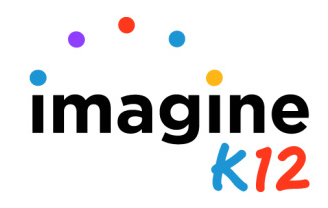I have three different paths I would pursue: one to increase the distribution of new technology to institutions, one to open up data to enable great services, and one to subsidize investment into web services that improve teacher collaboration and best-practice sharing. Given my experience as as a secondary teacher and as CEO of Inigral, this would be my contribution to the dialog.
1. Technology can’t successfully enter a market dominated by institutions that have trouble evaluating, deciding and purchasing. To address this, I would first create a well-branded call for early adopter institutions to participate in a special league of institutions who try out new technologies. This would also lead to organizing and plotting institutions in Higher Education and K12 onto a technology adoption curve, so that new companies and technologies know which customers to partner with while they are still early.
2. A second major problem is the stranglehold on data and information that could be used by web services to provide great technology. My personal pain has always been with plugging in to courses and schedules, which are nowhere with that can be read and process by computers. I suggest that institutions receiving state funding or accreditation participate in the Open Data movement (tastefully, while still respecting privacy), and the laws around privacy be revised to provide consistency with Open Data.
3. Good best-practices and supporting materials to are not getting to teachers and practitioners in ways that are easy to use and adopt. One way to address this would not require innovation at all, just a real focus on selecting “Master Teachers” and giving them the time to coach and train upcoming teachers. Beyond that, I would incentivize investment from private investors in web applications that support best-practice sharing and peer-evaluation and feedback.
More Detailed Explanations for the Interested:
1. High profile Foundations should make an official call for Visionary and Early Adopter institutions modeled on Race to The Top, with new technology grants to the strongest applicants. In order to qualify, these institutions would need to set up a fast track way to make decisions about technology adoption in order to have the privilege of being part of this community. Institutions that sign up for the Visionary program would make themselves available to entrepreneurs who are literally nothing more than an idea and talented people in a garage. They would work with these entrepreneurs to come up with a Minimum Viable Product and get to a working prototype. These institutions would not pay anything or would pay a very small amount. Early Adopter institutions would be willing to pay for products after a working prototype has been iterated upon until it successfully solves problems and gets used. They must be willing to pay more for a competitive advantage and to have early access to any efficiencies or solutions provided by the innovative product or service.
2. I suggest a national repository as part of the Open Data movement, and require or incentivize schools, post-secondary and K12, submit their planned course offerings to a central repository that can be read by computers (i.e. in XML). I personally would also create levels of access with secure keys to access more specific data about teachers and enrollments. Companies could then gain various levels of access, monitored and permitted by institutions themselves. There are all sorts of online tools, gradebooks, communication tools, etc, and one of their major barriers to entry is that teachers aren’t spending the time to set them up effectively, virtually locking in old vendors who aren’t innovating and preventing new products from getting utilized.
3. I used to teach K12, and its amazing what an isolating experience walls are. It’s also outlandish how poor teacher training is, even the best teacher training. It’s presented as all art and strategy, even though good teaching is entirely proven tactics that need to be practiced to the point of perfection. Nearly half of teachers spend two years getting their bearings and then quit. It has little to do with salary, and mostly to do with a lack of support, a lack of respect, and a lack of recognition. Many of these related problems can be addressed through the internet. These kinds of services need “patient capital.” Bootstrapping a company requires instant revenue streams, of which there are few in education. Venture Capital is looking for billion dollar exits within seven years of their investment. As a result, there are a lot of people that would do something in this space, but just can’t get off the ground
I’ve heard a couple of great ideas in this regard, and I know some of them are being worked on by various folks. For instance:
A. A K12 teacher-driven web platform that shares best-practices, model teaching, and tactical advice as well as resources. I’ve seen a million lesson sharing sites, and BetterLesson stands out as a quality product, HotChalk stands out in terms of quantity and breadth, my understanding is TFA has a start on this internally, but they don’t share and they need better product design. But lessons themselves don’t really do anything. They’re not chunked enough, they’re not contextualized enough, and a lot of the time its not the lesson itself that makes good teaching, it’s the good teaching around the lesson that new teachers need.
B. A Yelp-like review system for education vendors. You’d be amazed the absolutely terrible, unworkable products that get into our schools. Why? There’s a budget, and the sales process masks all the terribleness, the buyers are almost never the users. Technology companies in higher education tend to over-invest in sales (because selling is so difficult) and under-invest in product development. I’ve heard of scenarios where highly paid sales teams outnumber software engineers 6 to 1.
C. A $100 dollar stipend for each teacher that they must spend on web applications. This way, the user is the buyer.

